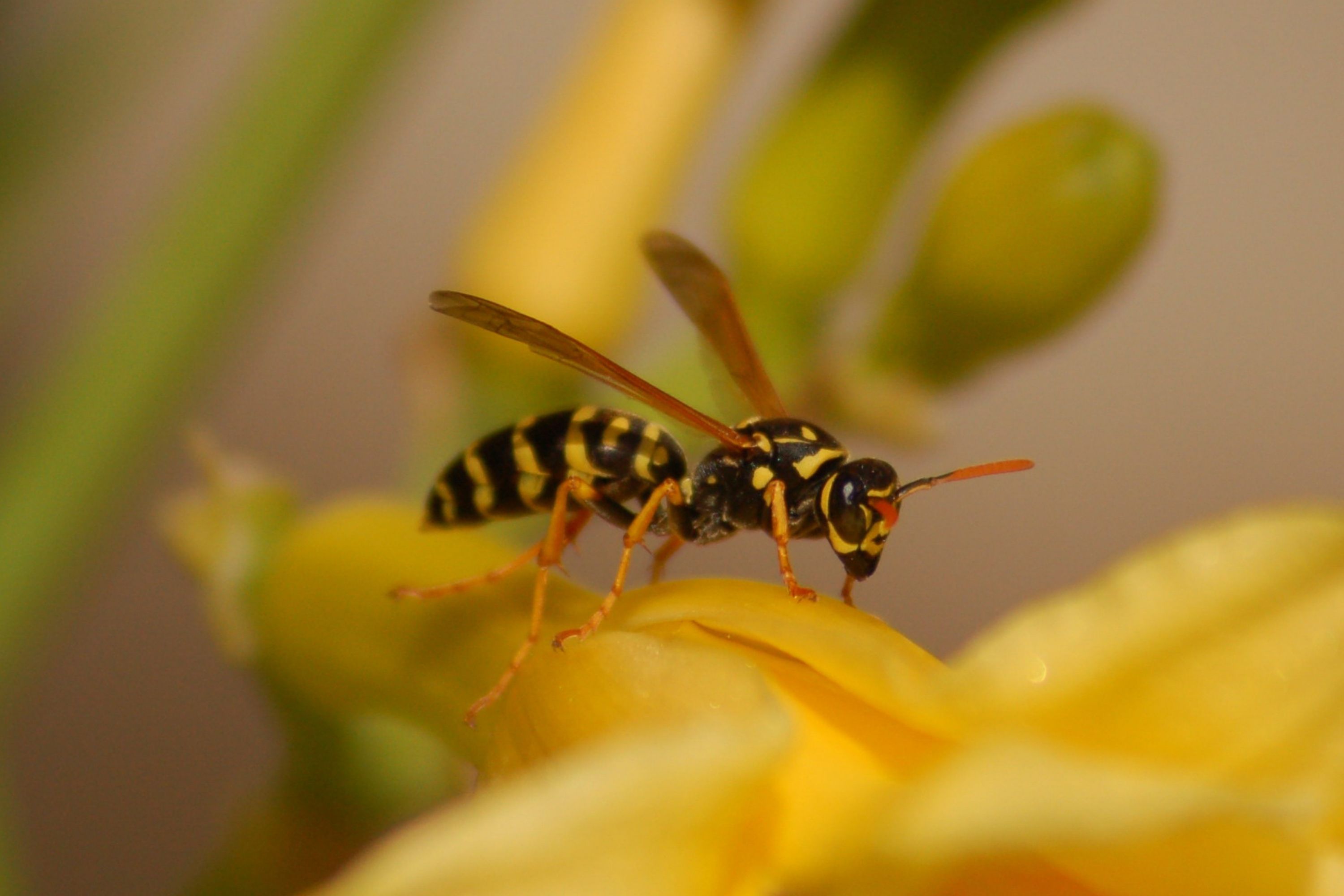European paper wasp
(Polistes dominula)

Description
The European paper wasp (Polistes dominula) is one of the most common and well-known species of social wasps in the genus Polistes. Its diet is more diverse than that of most Polistes species many genera of insects versus mainly caterpillars in other Polistes giving it superior survival ability compared to other wasp species during a shortage of resources. The dominant females are the principal egg layers, while the subordinate females ("auxiliaries") or workers primarily forage and do not lay eggs. This hierarchy is not permanent, though; when the queen is removed from the nest, the second-most dominant female takes over the role of the previous queen. Dominance in females is determined by the severity of the scatteredness in the coloration of the clypeus (face), whereas dominance in males is shown by the variation of spots of their abdomens. P. dominula is common and cosmopolitan due to their exceptional survival features such as productive colony cycle, short development time, and higher ability to endure predator attacks. These wasps have a lek-based mating system. Unlike most social insects, 35% of P. dominula wasps in a colony are unrelated. It is considered an invasive species in Canada and the United States. Little variation occurs among individuals of P. dominula; the wing lengths of males range from 9.5 to 13.0 millimetres (3⁄8 to 1⁄2 in), while those of females range from 8.5 to 12.0 millimetres (5⁄16 to 1⁄2 in). Its body is colored entirely yellow and black, similar to that of Vespula germanica, one of the most common and aggressive wasps in its native range. The female mandible is black and sometimes has a yellow spot. Females have a black subantennal mark that rarely has a pair of small, yellow spots. The female vertex sometimes has a pair of small, yellow spots behind the hind ocelli. Females have yellow, comma-shaped scutal spots. The native range of P. dominula covers much of southern Europe and North Africa, and temperate parts of Asia as far east as China. It has also been introduced to New Zealand, Australia, South Africa, and North and South America. Since the mid-1980s, the population of P. dominula has expanded to rather cooler regions, especially towards northern Europe. Global warming is speculated to have raised temperatures of certain areas, allowing P. dominula to expand to originally cooler regions.
Taxonomic tree:







